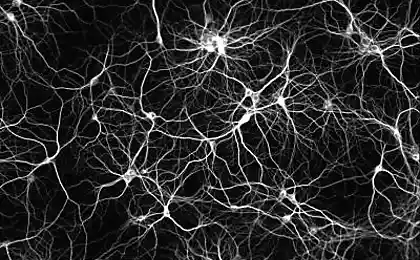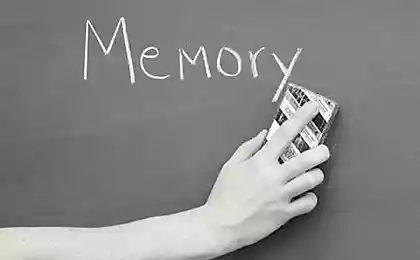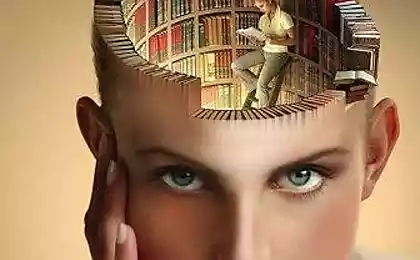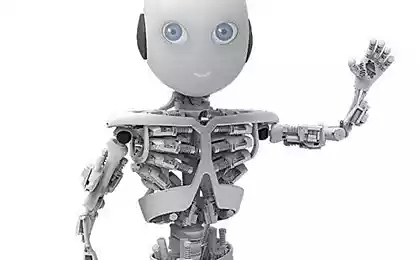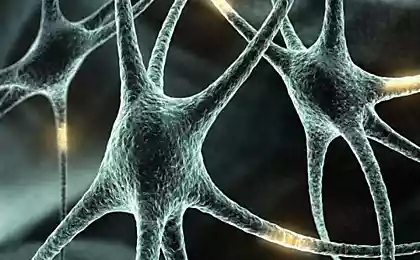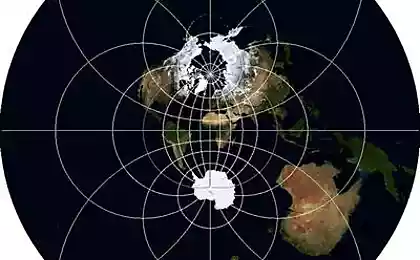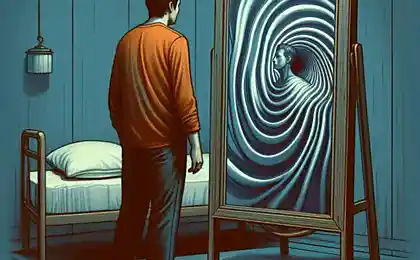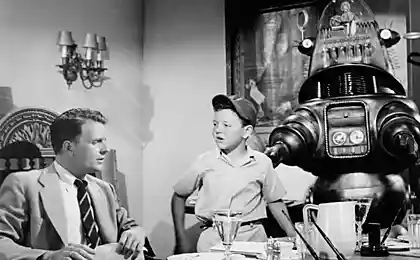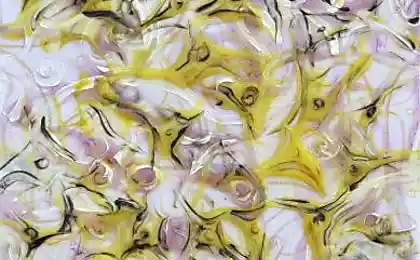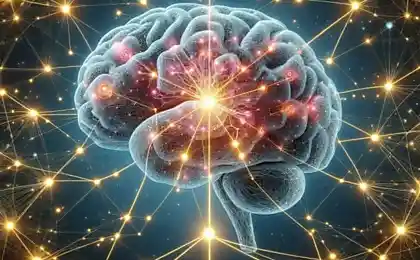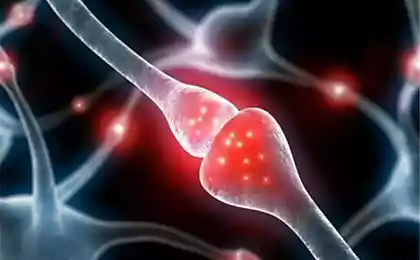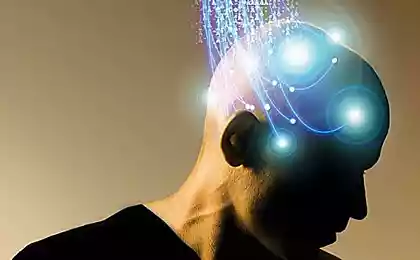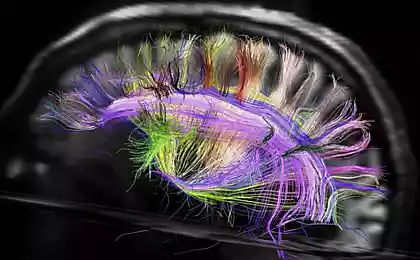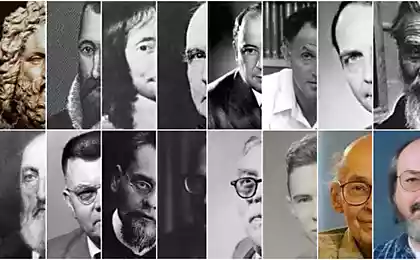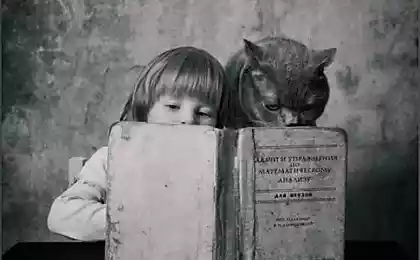1562
Logic thinking. Part 9. The pattern of neural detectors. Rear projection

This series of articles describes the wave model of the brain, is very different from traditional models. It is highly recommended for those who just joined, start reading from the first part of the .
Speaking of neurons-detectors. Suppose, on the area of the cortex by wave tunnels projected some information. Each of the projection beams - a neuronal axons located in that zone, which sends this information. The projection is removed from the small area of the cortex area. The fibers of the projection beam, in fact, going to translate this section of the wave pattern. The place of the host cortex, where people come to the projection itself becomes a source of waves. These waves are on the receiving area of the cortex the same information as the waves on the original area.
If we configure the weight of a neuron in the recognition of a particular wave pattern, passing through its receptive field, we turn it into a detector which is triggered at a time when there is a characteristic of a combination of identifiers.
If we will teach a few located in relative proximity to each other neurons to detect the same wave pattern, then we get not a single neuron-detector, and a detection pattern. The reaction of one neuron-detector characteristic stimulus - package pulses evoked activity. The reaction of the detector pattern - this is caused by the activity of groups of neurons that form a certain pattern. Naturally, this pattern evoked activity will begin to teach the bark on the distribution of its unique identifier.
It turns out that when the zone of the cortex receives a description consisting of certain characteristics, its detector responds to familiar patterns of their own combinations and generate waves that carry information about the new symptoms, learn this area. Thus, cortical zone first detects the incoming statistical patterns indicative of it, and generates a picture pattern detectors corresponding to these laws, and then give a description of some attributes, it generates its own in the description of those symptoms that were previously identified by this zone. < br />
The logic of such a transformation of neural descriptions can be compared with the logic of verbal descriptions, which is not surprising, as these phenomena are closely linked. Suppose we see a variety of animals. Each of them, we can describe a set of symptoms. For example, we see the beast with the description: a big, brown, shaggy. Not knowing what kind of animal, so we can call him: a large brown-hairy. The very combination of features forming the identifier of this animal. If this beast we meet often, then we can fix regularity that these symptoms occur together, and give it a combination of its own name, for example - bear. Next, we employ the concept of "bear" as an independent. At the same time we have the opportunity, if necessary, to restore the concept of "bear" all of its original features.
Talking about the real world, it is convenient to use the term "phenomenon". His ease in his community. This term describes not only objects, but also occurring with them processes. Any perceived us a picture we can call the phenomenon. Every phenomenon with which we are faced, generates description. Description - a collection of paintings of neuronal activity detectors, forming patterns, and they generate identity waves.
Can be called a pattern of neurons-detector triggered on one image and the corresponding identification wave concept. Then we can talk about that any phenomenon is represented by the brain as a set of descriptions, consisting of concepts. For each zone of the cortex description is based on its set of concepts.
When neurons detectors emit any new law or a new fixed combination of features, so that with the formation of a pattern of such detectors, which are able to produce your own unique wave, we can talk about the formation of new concepts. Interpretation of this concept may be the real-world events that have created such a combination of symptoms, and who now react corresponding neurons.
Patterning. Rear projection
Pattern of neurons detectors tuned to a common stimulus, allows you to run your own unique wave identifier. This corresponds to the image recognition and included by the Board of the concept in the description of what is happening. The ID is unique enough to neurons detectors create a pattern, like no one of the wave patterns that pass through their location. We describe a simple model that creates a pattern.
Let us return briefly to describe the mechanisms of neuronal interactions. The main route of transmission of signals from one neuron to another - is the release of the axonal terminal transmits neuron neurotransmitter into the synaptic cleft. On the surface of the neuron receives a signal located receptors that respond to a specific neurotransmitter, which is a ligand for. Part receptors located at the synapses and is responsible for synaptic transmission portion outside of synapses and is responsible for the wave activity.
There are many neurotransmitters, including neuroactive peptides, there are more than fifty. The most common activating neurotransmitter - glutamate, overwhelming - gamma-aminobutyric acid (GABA). The ability to activate or suppress a property not of a neurotransmitter, and is determined by type receptor interacts with it. To signal transmission could take place, it is necessary to neurotransmitter ejected axon, and host its receptors are consistent with each other.
Until the end of the 80s of the last century it was thought that each neuron emits the same mediator in all terminals of its axon - the "principle of Dale." But later it was shown that there are neurons that use different combinations of mediators.
Take for modeling neurons of two hypothetical types of working with a mediator, call it (A). The difference between the types of neurons will be where they will be located receptors sensitive to the overall mediator (see table below).
The place chosen for learning i>
Suppose that we have solved all the issues related to training, and our task is now simply fix the prototype. We do this to us already familiar way. Making the neurons of the second type are in this area and unoccupied in training, to participate in the generation of random spikes. We establish the likelihood of such a spike to get as many active neurons, as neurons detectors requires us in the final pattern. Random spikes create a unique pattern of neurons of the second type, which is localized in the selected area.
Next, we proceed in accordance with the principle of Hebb, use the activity of neurons of the second type as a signal for their learning. Change the weight of their synapses in accordance with the observed them in their receptive fields of the wave picture. As a result, we obtain a pattern of neurons detectors tuned to just the last set of identifiers. The repetition of the wave pattern will lead to induced activation of neuronal pattern. The neurons of the first type will pick up this pattern and turn it into a propagating wave of a new identity.
We got a very simple but remarkable result. Some combination of identifiers capable of generating its own unique identifier.
Now a few complicate the model. Add another mediator (B) and change the characteristics of neurons (see Table below). Synapses
Out of synapses
Axon
Type 1 B
A
A Type 2 A B B < em> The characteristics of neurons using two mediator. The sensitivity of the receptors and the release of the axon em>
The behavior of this design will be much more interesting. Neurons of the second type, creating a pattern detector, a wave will not spread through it from the first type of neurons as a mediator of type axonal extrasynaptic does not coincide with the first type of sensory neuron. But these neurons themselves can circulate a wave of his identity. It is interesting that the input and output activity of the cortex would be divided. If we are somewhere in the side of the tunnel will create the output wave of the axons of neurons of the second type, it does not give the whole picture of the wave, consisting, inter alia, from the set of input features, and will broadcast only further description consisting of recognized concepts.

Changing the description on the cortex. 1 - selected area of study, 2 - the region emitting the input identifier 3 - exit area, 4 - input wave tunnel 5 - wave output tunnel 6 - input wave identifier 7 - Output wave identifier i>
But that's not all. In the same selected area we can conduct training synaptic neurons of the first type. For them, the signal for learning is its own wave activity. Since we have set the sensitivity synapses of neurons of the first type only mediator (B), then the pictures that they will take - this pattern of the pattern itself, which we have previously trained on neurons of the second type. Moreover, these neurons-detectors of the first type will line up in the pattern repeating wave identifiers, which took place at the time of study. This means that if we head through the tunnel wave refund on bark ID concepts previously observed neurons of the second type, then spreading to the selected location, it will cause the activity patterns of neurons-detectors of the first type. And since these neurons repeat pattern wave source fragment identifiers, their activity caused by force spread across neurons of the first type the appropriate identification of the wave.
Thus, we have reproduced the mechanism of rear projection. Bark in our model is able to transmit information in both directions. In the forward direction is the integration of features and change the description of a more general. In the opposite direction, to obtain the corresponding identifier, bark recovers all its corresponding features and translates them down, of course, if there is a corresponding flat connection.
We got a rather simple design: one way - learned a thing in the opposite direction - to restore the signs. But this simplicity is two-way communication is a unique property for neural networks. Traditional network ideologically unidirectional, they can not run the signal "back along the axon," and this defect can not be cured by any tricks. It is obvious that the real brain is able to not only synthesize information, raising the description from level to level, making it more abstract, but also to translate the description back, turning it into images submitted to us, inner speech, physical actions. Therefore particularly pleased that our design allows natural enough to reproduce the reverse projection, while remaining within the mechanisms available and the real brain.
If you make the axons of neurons of one type to generate just two of the mediator, we get the distribution of relevant identifiers from two layers. One can imagine situations where it would be useful. In general, the combination of neurotransmitters and receptors can program the most unexpected behavior of the crust. At the same time pleased that our bark does not require any special topological settings. Neurons form synaptic contacts with their environment without worrying about compliance with any connection schemes. It is very likely that similar architectural principles inherent and real crust.
References
Continued
Previous parts:
Part 1. Neuron
Part 2. Factors
Part 3: Perceptron, convolutional network
Part 4. Background activity
Part 5. The brain waves
Part 6. System projections
Part 7: Human-Computer Interface
Part 8: Allocation of factors in the wave networks
Alex Redozubov (2014)
Source: habrahabr.ru/post/215283/
Logic thinking. Part 8: Allocation of factors in the wave networks
Logic thinking. Part 10: Spatial self-organization

